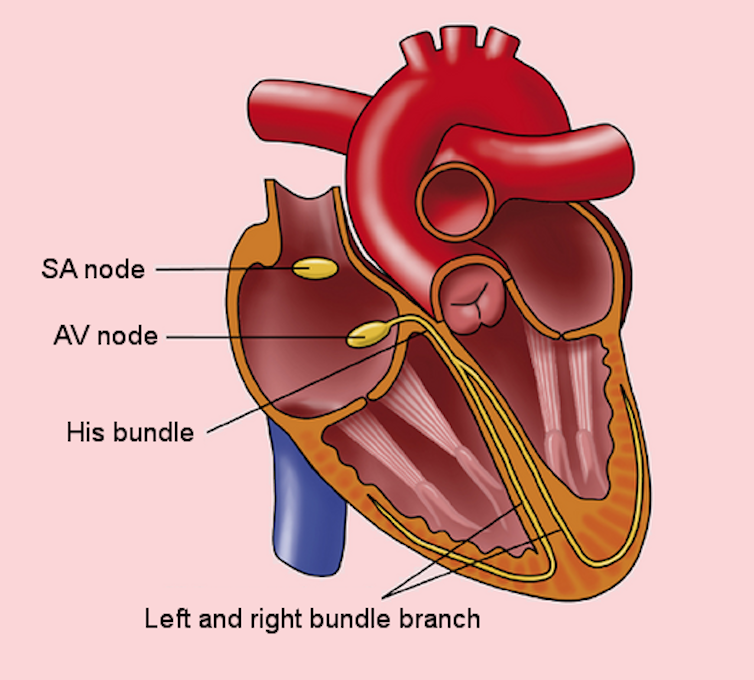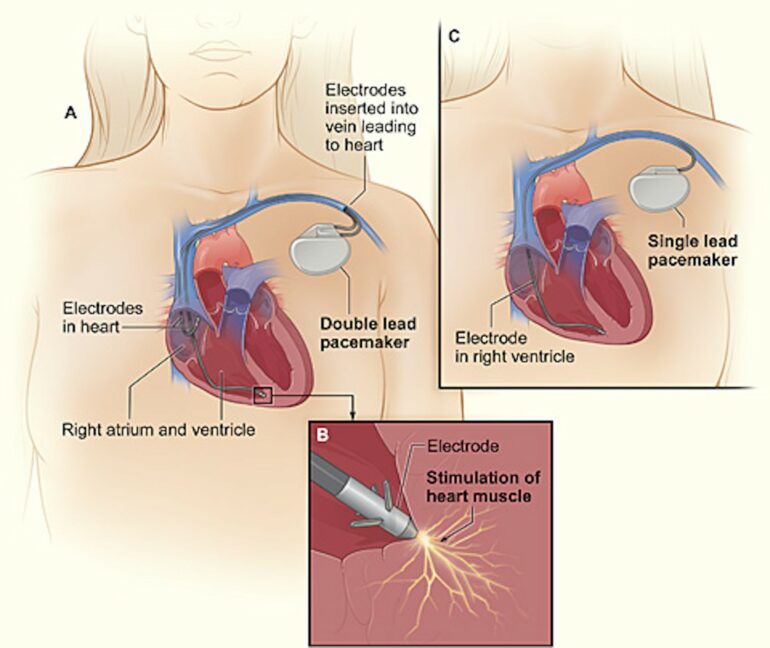Your heart’s job is to keep your pulse steady to pump blood throughout your body. Sometimes your heart rate is slower when you’re relaxing, and sometimes it’s faster when you’re exercising or stressed. If your heart’s ability to keep the beat starts to go awry, cardiac electrophysiologists like me look for outside help from an implantable device.
There are two common implantable devices for the heart: artificial pacemakers and defibrillators. Artificial pacemakers keep blood and oxygen flowing during times of stress. Defibrillators are devices that detect dangerously fast heart rates and deliver shocks like those used during cardiopulmonary resuscitation, also known as CPR, to restart the heart.
Understanding how these devices work requires appreciating how the heart’s electrical system works and the weak links that cause malfunctions.
The heart’s natural pacemaker system
Abnormally slow heart rates result from breakdowns in two principal areas of the heart.
First, the sinoatrial, or SA, node sets your “resting” heart rate, usually somewhere between 60 and 100 beats per minute. This is the base effort needed to circulate enough blood to sustain normal bodily function. Elevated levels of certain hormones circulating in the body, such as adrenaline and serotonin, can increase heart rate above resting levels.
Trained athletes frequently have a lower resting heart rate due to extra physical conditioning. Like any other muscle, the heart becomes stronger with training. Because their heart functions more efficiently, athletes require fewer heart beats overall to circulate blood.

Breakdowns in the sinoatrial and atrioventricular nodes can cause heart rate problems.
Rob Kreuger, medical illustrator/Wikimedia Commons, CC BY-SA
The atrioventricular, or AV, node is the second key area of the heart’s electrical wiring. The atrioventricular node takes information about how fast the heart is beating from the sinoatrial node and relays it to the ventricles, the muscular portions of the heart that allow it to pump blood to the rest of the body.
When the atrioventricular node breaks down, the ventricles don’t receive the electrical signal from the sinoatrial node instructing them to “pump,” or create a heartbeat. This causes heart rate to become dangerously slow.
When heart rate is too slow
If resting heart rate is abnormally low or fails to increase with hormonal changes, pacemakers can help keep blood and oxygen circulating at a healthy rate.
Both the SA node and the AV node naturally slow with age, but sometimes this happens at an accelerated pace and leads to abnormally slow heart rates. Slow heart rates can also be caused by other diseases, including thyroid problems and Lyme disease. In these cases, slow rates are treatable without a pacemaker.
A common pacemaker system has a battery and two wires that can send and receive electrical signals. One wire rests near the…
